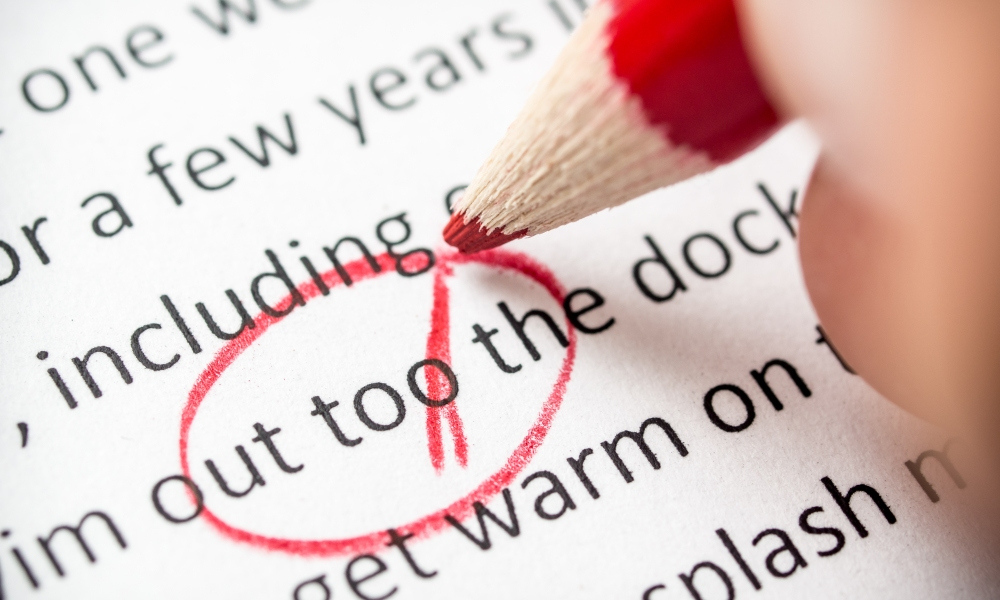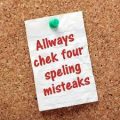The following rules may seem minor, but if someone who knows the rules reads, for instance, a research essay with obvious word choice errors it may degrade her or his opinion of the work in its entirety. Thus, for writing academic essays, as well as other types of writing, proof reading is very important. For everyday writing or essay help, consider the following rules when editing writing.
Proper Grammar Rules Regarding “Which” versus “That”
“Which” and “that” are often used interchangeably in writing to begin clauses, but they are not really interchangeable. Proper grammar requires that the two words be used for different occasions, though they may “sound” correct if one is not specifically editing for proper word choice. For example, the best essay writing service states that one should not rely on intuition when grammar checking: instead one should read through carefully to make sure that particularly difficult words (like “which” and “that”) are used properly.
The simple difference is that a clause beginning with “which” is not crucial to a sentence’s meaning. Yes, this may seem unfair to “which,” but this is one of the easiest ways to remember the difference between the two words. A clause that can be removed from a sentence should use “which,” while one that is necessary for the sentence should use “that.”
Use “that” when the clause is necessary to the meaning: The house that had flowers was ours. In this sentence, although the sentence would remain complete if the “that” clause were removed (to create “The house was ours.”), the sentence would not hold the same meaning. The point of the sentence is that the house had flowerbeds, not that the owners had a house.
Use “which” when the clause is not necessary to the meaning: The house that had flowers, which were daffodils, was ours. In this sentence, the clause “which were daffodils” is not crucial to the meaning, as the main meaning is that the house had flowers, not that the flowers were daffodils.
If this still does not seem too clear, think about the two words in terms of commas. “Which” is always separated by commas, because the clause is not crucial to the sentence, while “that” is not separated by commas.
Grammar Checking for “Lay” versus “Lie”
“Lay” and “lie” are also often used as the same word, even though they are not. There are many reasons why these words get mixed up in the English language: they are both three-letter words that start with “l,” they are both verbs, they have similar meanings, and “lay” is the past tense form of the present tense word “lie.” Already confused? The difference between “lay” and “lie” can be tricky, but the rules below will help in a pinch.
Writing Papers with Correct Sentence Style
The present tense verb “lie” is intransitive and does not take on a direct object. This means that it describes a state of being, rather than an action done to an object. Thus, “lie” describes the act of lying down: The dog lies down.
The present tense verb “lay” does take a direct object. In other words, one uses “lay” when an action is done to something else. For instance, one may write: I lay the card on the table (the card being the direct object).
For quick reference, the various verb forms are listed below.
- Forms of lie (base form, meaning to recline): lay (past tense), lain (past participle), and lying (the present participle).
- Forms of lay (base form, meaning to place): laid (past tense), laid (past participle), and laying (the present participle).
Academic Editing for Correct Use of “Who” and “Whom”
Of the three issues discussed in this article, this is probably the one that seems the least intuitive, because “whom” is used very little in everyday conversation. However, knowing the difference is important for academic writing, because professors will likely know the difference, and may penalize for mistakes. Grammar checking for “who” versus “whom” may make a research essay seem more technically correct because academic editing requires thorough proofreading and attention to detail.
So “who” is always used as a subject, while “whom” is used as a direct object: both are pronouns. To clarify the issue, “she” is a pronoun used as a subject, and “her” is a pronoun used as a direct object; thus, “who” is equivalent to “she,” and “whom” is equivalent to “her. ”
To test whether “who” or “whom” should be used, sometimes it helps to first test a sentence with a more common pronoun to “hear” which is better. For instance, to check whether “who” or “whom” should be used for the question “She went with ___?” simply insert a more common pronoun. “She went with her?” does not make any sense, but “She went with her?” does. Thus, one should use the pronoun equivalent to “her,” which is “whom”: the sentence becomes “She went with whom?” This can help to avoid confusion when editing writing.





